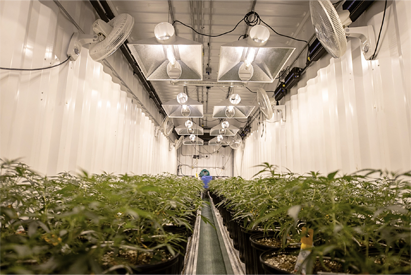Hazardous Locations in Cannabis Processing Facilities

As more states legalize cannabis, the number of cannabis processing facilities continues to increase. Chemicals used in the production of cannabis products, such as CBD, create areas within the facilities that are classified as hazardous locations by the National Electrical Code (NEC).
The most dangerous areas of cannabis production are in the processing and extracting sectors. While extracting oil from the plant, flammable solvents such as butane, pentane, hexane, and ethanol can be present, increasing the risks of fire and explosions.
Addressing Fire Risks
In recent years, explosions and fires at cannabis processing facilities have injured production-line personnel and first responders. To address the issue of fire safety, the 2023 edition of the NEC added Article 512, Cannabis Oil Equipment and Cannabis Oil Systems Using Flammable Materials. Article 512 covers equipment and systems, wiring installation and operation, and wiring installed above hazardous locations (e.g., in electrical raceways).
Additionally, the National Fire Protection Association (NFPA) has approved the development of NFPA 420, Standard on Fire Protection of Cannabis Growing and Processing Facilities, that will provide guidance on fire protection standards for facilities that produce, process, and extract cannabis. NFPA task groups are working on preliminary chapters focusing on the fundamentals, of indoor growing, drying/processing, and extraction, with the goal of having an initial document available for public input sometime in 2024.
Raceway Fittings
The electrical systems in hazardous locations require components specifically made to protect against the dangers of these environments. Designed to keep any explosions contained within the raceway, these components keep the hazards from spreading to the rest of the conduit system.
Gibson Stainless offers products designed to exceed all standard electrical industry practices. In addition, its hazardous locations product line consists of products designed for the added risks found in hazardous location applications. To view this product offering, visit our Stainless Steel Hazardous Locations line. Or, to learn more about these environments, visit our blog post "Understanding Hazardous Locations."

 Print This Page
Print This Page Email This Page
Email This Page